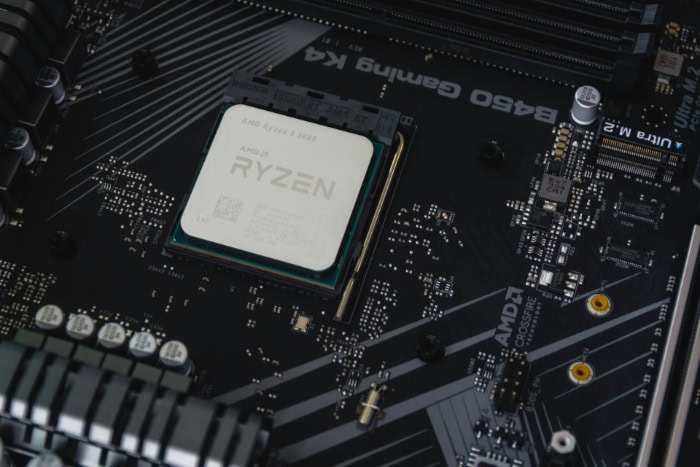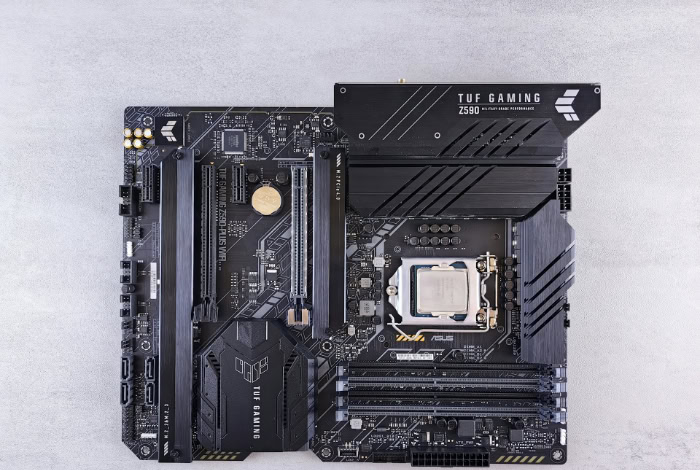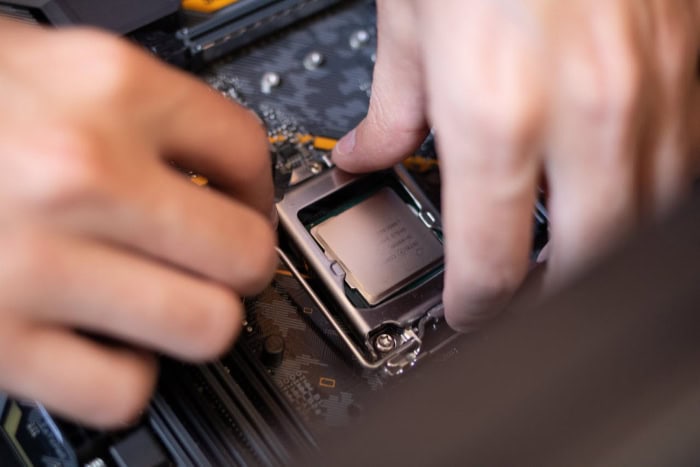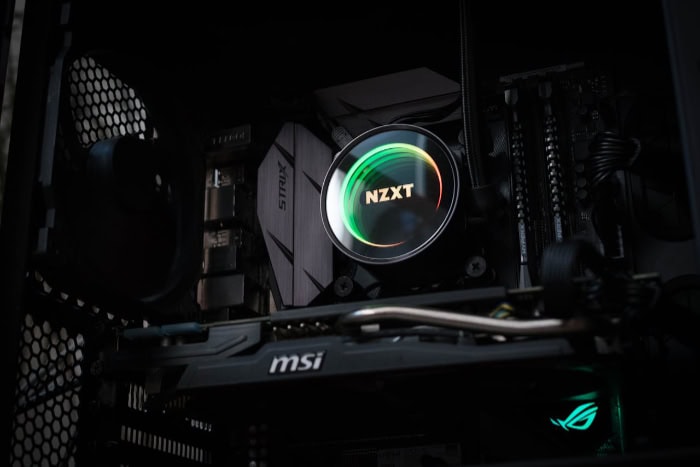When Should You Upgrade Your CPU? Avoid Common Mistakes

Watching your computer lag during an epic gaming session or crawl through a hefty video render can be endlessly frustrating. Sometimes, it feels like your hardware just isn’t keeping up, but is a new CPU really the answer? Tech upgrades are often a big investment, so knowing when a processor swap provides real value is essential.
By pinpointing bottlenecks, understanding upgrade pathways, and weighing the costs, you can make confident, future-ready decisions.
Identifying Performance Bottlenecks
Recognizing the signs that a CPU is holding your system back can be the difference between an enjoyable, fluid computing experience and one filled with frustration. Many users blame lag or poor performance on their graphics card or storage, but the CPU plays a crucial role in determining how smoothly your games, creative projects, or daily tasks run.
Symptoms of CPU Limitation
A struggling CPU often makes itself known through a variety of frustrating symptoms. Frequent system freezes, sudden crashes, or persistent stuttering typically occur during demanding tasks such as AAA gaming or rendering high-resolution video projects.
Instead of smooth operation, you might notice your PC hesitating, skipping frames, or momentarily locking up.
Another telltale sign involves your graphics card. During intense workloads, a high-end GPU may sit underutilized, often running at lower clock speeds and sometimes even overheating at temperatures upwards of 90°C.
When this happens, it’s often because the processor cannot supply data to the graphics card quickly enough, making the GPU wait rather than work at full capacity. These situations point directly to CPU limitations, not GPU shortcomings.
Workload-Specific Bottlenecks
Different workloads reveal processor bottlenecks in distinct ways. For gamers aiming to play at 1440p or 4K, problems can arise not just from the graphics card but also from a CPU unable to process game logic, physics, or AI quickly enough.
Such issues manifest as low frame rates in titles known for their CPU demands, even when a powerful GPU is present. Fast-paced shooters, simulations, and open-world games tend to highlight these problems most dramatically.
Those working with 3D rendering programs, video editing suites, or complex design software might face slow processing times, laggy interfaces, and long render queues. Projects that should take minutes to export can instead take much longer, wasting valuable time and undermining productivity.
When upgrades to other components like RAM or SSDs fail to solve these problems, the processor almost certainly stands as the bottleneck. Recognizing when your CPU is falling short is the first step to reclaiming performance and efficiency for any demanding workload.
Compatibility & Upgrade Pathways

Upgrading a CPU can be one of the most satisfying ways to boost system performance, but it’s not always as simple as swapping out one chip for another. Compatibility issues often present the biggest obstacle, and many users run into unexpected hurdles that can turn an upgrade into a much larger project.
Taking the time to consider platform limitations, required updates, and necessary supporting components ensures that your investment pays off and your new processor runs as intended.
Socket/Motherboard Compatibility
Every processor fits a specific socket type, and not all sockets or motherboards support every CPU generation. For instance, Intel’s 9th and 10th generation chips use different platforms than the latest 13th or 14th generation models.
AMD has a similar split between AM4 and AM5 sockets, with each supporting distinct CPU families. Attempting to install a new processor onto an older or incompatible motherboard usually results in a system that won’t boot at all.
Before any purchase, double-checking compatibility between your desired processor and current motherboard saves time, money, and frustration.
BIOS/UEFI Requirements
Even with the correct socket, newer CPUs may not function without a compatible BIOS or UEFI firmware update. Manufacturers regularly update firmware to support the latest processors, and skipping this crucial step can leave your system unable to recognize a new CPU.
Completing a firmware update with your current processor still installed often solves the problem. Some motherboards even feature a BIOS flashback option, allowing software updates without a working CPU, though not every board offers this functionality.
Peripheral Upgrades
Installing a new processor may also require updates to other system components. Newer CPUs often introduce support for faster RAM types, such as DDR5, which older motherboards and RAM modules cannot accommodate.
Ensuring your system memory matches the requirements of both the motherboard and the new CPU is just as important as socket compatibility. Power supply capacity and cooling also come into play.
A more powerful processor generates more heat and can draw more power, so checking your cooler’s ability to dissipate heat and verifying that your PSU delivers enough wattage eliminates stability and thermal issues down the line. Coordinating all these elements ensures your upgrade runs smoothly from the start.
Cost-Benefit Analysis

Before jumping into a CPU upgrade, considering the financial side of the decision makes all the difference. Performance gains can be enticing, but the price tag that accompanies a new processor, supporting hardware, and potential rebuilding costs should align with your actual needs.
Upfront Costs
Processor prices cover a wide spectrum, ranging from budget-friendly options around $50 to flagship models that can exceed $600. The numbers rarely stop there.
Upgrading to a newer CPU generation often requires a new motherboard, and possibly a switch from DDR4 to DDR5 memory. These parts add to the total, sometimes doubling or tripling what you expected to pay.
A simple CPU swap might quickly turn into a near-total platform upgrade, especially as newer generations demand more advanced chipsets and RAM formats. Weighing these actual expenses against your initial budget provides a realistic outlook before hitting “purchase.”
Return on Investment (ROI)
The most expensive processor isn’t always the smartest choice. Diminishing returns come into play, especially for upgrades within the same performance tier.
Spending hundreds on a mid-range processor to replace another mid-tier chip may only deliver marginal improvements in gaming or everyday tasks. Dramatic gains generally accompany jumps to an entirely new platform or much higher-tier component.
Evaluating how much extra performance you receive per dollar spent helps reveal whether a specific upgrade is truly worth it, or if saving for a bigger leap later on might be wiser.
Upgrade vs. Rebuild
The decision to upgrade or rebuild a system should weigh both costs and performance outcomes. Swapping a CPU and compatible motherboard can breathe new life into a system without scrapping everything, but sometimes that investment approaches the price of building a new PC from the ground up.
Factoring in additional needs like new RAM, a larger power supply, or modern storage, rebuild costs might only be slightly higher than a partial upgrade while delivering far greater flexibility and room for future enhancements. Comparing the total cost and expected gains for each option paints a clear picture of which path brings the best value for your situation.
Benefits of Upgrading

Investing in a new CPU can transform your computing experience, breathing fresh energy into tasks that once felt frustratingly slow. Performance gains are often immediate and noticeable, especially for those whose work or play pushes their hardware to its limits.
A modern processor doesn’t just add speed, it opens the door to new software features, better efficiency, and greater flexibility as technology rapidly evolves.
Gaming Performance
For gamers, the CPU serves as a crucial component in delivering high frame rates and smooth gameplay, especially in titles that lean heavily on processor resources. Games like Warhammer 40k: Darktide highlight the demands placed on the CPU, with complex simulations, advanced AI, and intensive physics calculations all relying on strong single- and multi-core performance.
Upgrading to a faster CPU often translates directly to more consistent frame rates, fewer drops during hectic scenes, and the ability to fully utilize high-end graphics cards. Competitive players and those enjoying newer AAA releases will notice bigger gains, with smoother play and reduced stutter in traditionally CPU-bound sections.
Productivity Gains
Professionals and content creators benefit from improved responsiveness and speed in resource-heavy applications. Upgrading your processor slashes waiting times in Blender, Premiere Pro, CAD software, and other creative tools.
Rendering large 3D scenes, exporting complex video timelines, or running advanced simulations all become dramatically faster, letting you focus on the creative process rather than staring at progress bars. Efficiency boosts in productivity software translate to more done in less time, a welcome improvement for anyone balancing tight deadlines or ambitious projects.
Future-Proofing
Modern CPUs often bring compatibility with the latest hardware and software standards, helping to prepare your system for what comes next. Support for PCIe 5.0 and DDR5 memory opens up potential for faster graphics cards, storage devices, and multitasking capabilities, ensuring your computer remains relevant as new technologies reach the mainstream.
Adopting a newer platform also guarantees better access to updates, security enhancements, and broader peripheral compatibility, making future upgrades easier when the time comes.
Energy Efficiency
Efficiency improvements in newer processor architectures lead to meaningful reductions in both power usage and heat output. A more efficient CPU not only lowers your electricity bill but also produces less heat, helping your system run cooler and quieter.
Improved thermals allow for more consistent performance, especially during prolonged workloads or gaming marathons. Fewer fans spinning at high speeds results in a quieter workspace, and less heat generation can extend the life of other components.
Energy savings and ease of maintenance make upgrading to a modern CPU a practical move for those who value a reliable and efficient setup.
Challenges & Solutions

While upgrading a CPU can greatly improve system performance, the process often involves hurdles that can catch even experienced builders off guard. Compatibility problems, installation pitfalls, and fluctuating market prices can all complicate what might seem like a straightforward swap.
Addressing these challenges in advance prepares users for a smoother experience and helps avoid frustration, extra expenses, or even hardware damage.
Motherboard Limitations
Older motherboards may not natively support newer processors. Platforms like Intel Z370 or AMD AM4, for example, often require a specific BIOS update to recognize the latest compatible CPUs.
Missing this step can leave a system unable to boot or missing important features. In some cases, a new CPU upgrade may demand a replacement motherboard entirely if the existing platform has reached the end of its support cycle.
Checking for BIOS compatibility and performing updates with the old processor still installed helps prevent installation roadblocks. Occasionally, borrowing a compatible chip temporarily is necessary to access the update process.
Installation Risks
Physical installation introduces its own set of risks, even for those comfortable working inside a PC. Applying too much or too little thermal paste can cause cooling issues, leaving the CPU prone to overheating.
Mishandling pins during installation may bend or break them, making your new processor unstable or unusable. Careful research and following step-by-step guides reduce these risks.
Taking time to evenly apply thermal paste, gently secure the cooler, and handle the CPU by the edges will help keep things running cool and reliable.
Used Market Volatility
Pricing in the used market can fluctuate wildly, particularly for older but still-popular processors. Some models, like Intel’s 10th and 11th generation CPUs, may be overpriced due to limited availability or strong demand from users hoping to extend the life of an aging platform.
In many cases, a brand-new, more advanced model costs just a little more while offering vastly better performance and efficiency. Comparing prices between used and current-generation options often reveals that spending a bit extra on modern hardware provides much better value and avoids the pitfalls of discontinued platforms.
Patience can also pay off, as waiting for sales or promotions can make newer components surprisingly affordable.
Conclusion
Choosing the right moment to upgrade your CPU involves more than spotting slowdowns or chasing the latest technology. Look first at where performance issues are truly coming from, if your workloads regularly face thermal throttling, frequent stutters, or your graphics card sits underused, a processor upgrade can make a substantial difference.
Balancing the expense of new hardware against needs like PCIe 5.0 or DDR5 support ensures your investment stands the test of time.
For casual users, other upgrades may offer more noticeable gains. Upgrading your graphics card or switching to a solid-state drive often improves day-to-day tasks and gaming without the complexity or cost of a full platform change.
Enthusiasts and content creators targeting the best possible performance, however, should focus on newer platforms like Intel’s 14th Gen or AMD’s Ryzen 7000 series. These options guarantee broader compatibility, exceptional speed, and easier future upgrades.
Ultimately, a thoughtful approach tailored to your real-world needs delivers the best combination of performance, value, and satisfaction, helping you get the most from every upgrade.


